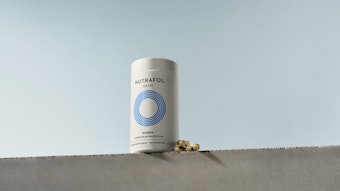Acne vulgaris (acne) is a skin disease that can be caused by multiple chronic issues including: hyperkeratinization, sebaceous gland hyperplasia with seborrhea, Propionibacterium acnes proliferation and inflammation.1, 2 Seborrhoeic dermatitis is an inflammatory skin dermatosis that is observed as red plaques covered with greasy, yellowish squames that are pruriginous and predominant in the seborrhoeic areas. Seborrhoeic dermatitis produces an excess of sebum that can be periodically more susceptible to infection from bacteria, yeasts and fungi. Seborrheic inflammation can be considered as a form of acne vulgaris, an obstruction of the sebaceous flow that can cause the formation of pimples.
Excess amounts of sebum in the sebaceaous duct and on the skin acts to block or stagnate the continuous flow of sebum from the follicle duct, which in turn produces a thickened sebum that becomes the solid plug known as a comedone or “blackhead.” The oily, waxy substance excreted from the sebaceous gland (sebum), which is physiologically associated with skin protection and lubrication, can become blocked by dead skin cells, dirt, pollutants and cosmetics, where a nutrient-rich anaerobic environment is established. This blockage can also be due to diet, stress, poor hygiene, steroidal medications and hormonal changes. The usual result is an elevation of the skin surface (papule), which is often contaminated with bacteria that can cause a secondary infection. Deeper inflammation can form a red or white small elevation based on necrotic inflammatory cells (pustule). Still deeper inflammation can result in the formation of a closed sac called a cyst, an epithelial lined cavity containing liquid or solid matter; or hard swellings called nodules, similar to a papule but deeper and larger. These occurrences characterize the disease today known as acne—development of P. acnes (saprophytic bacterial flora), and in lesser severity, seborrhea. The management of acne can be complex, often requiring aggressive combination therapy and a long-term therapeutic strategy.3-5 Maintenance therapy is necessary for many acne patients, as acne lesions have been shown to return after discontinuing a successful treatment regimen.










